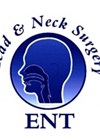Events
BSA Certificate in Otoscopy 2026 (Jan)
Newbury, UK
ENT UK ST3 Accelerated Learning Course Bootcamp 2026
Manchester, UK
20th ‘Anniversary’ National ENT Masterclass®
London, UK
The faculty this time consists of some of the leading stars of ENT in the UK, including eleven past-presidents of the Royal Society of Medicine ENT sections. The programme includes 32 state-of-the-art lectures and three panel discussions on a range of topics in otolaryngology and head & neck surgery.
Head and Neck Dissection Course Jan 26
Glasgow, UK
BSA Certificate in Basic Audiometry 2026 (Feb)
Newbury, UK
BSA Audiometry Refresher 2026 (Feb)
Newbury, UK





